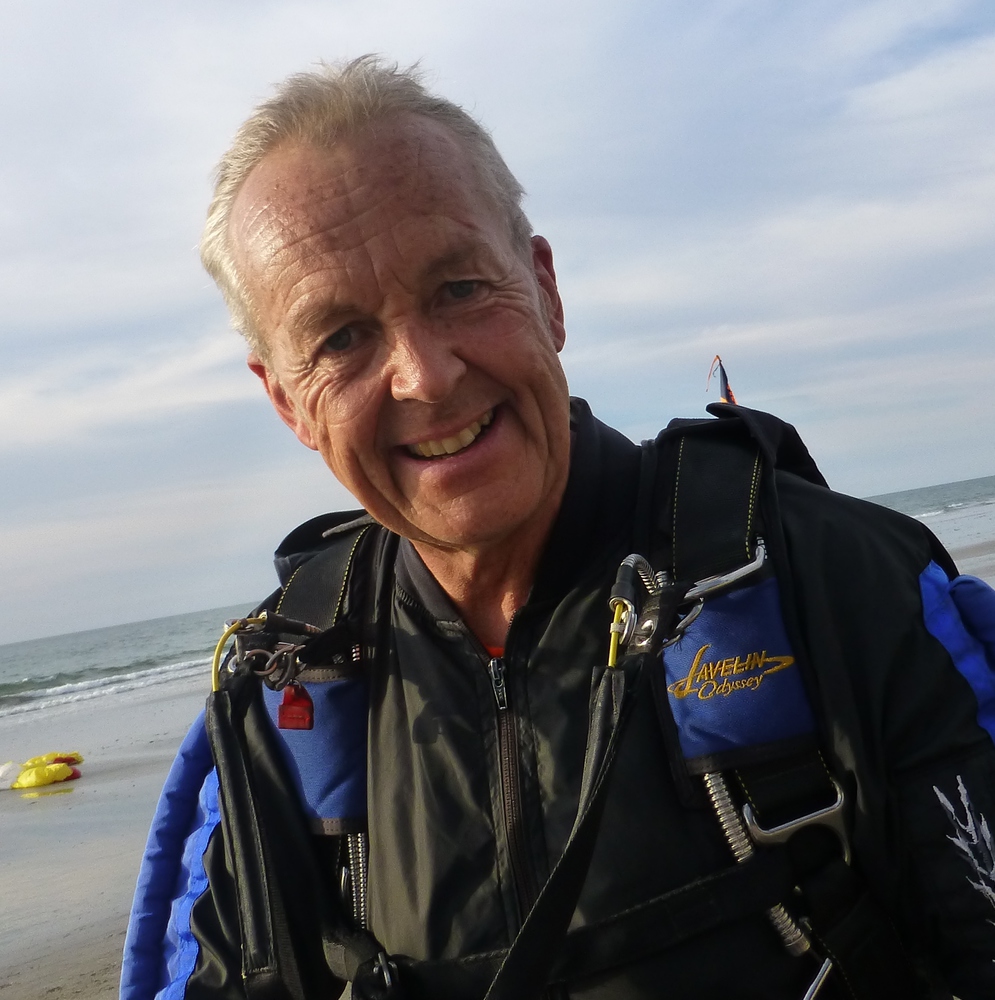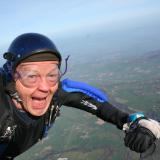-
Content
7 -
Joined
-
Last visited
-
Feedback
0%
Community Reputation
0 NeutralGear
-
Main Canopy Size
135
-
Main Canopy Other
Stiletto 150
-
Reserve Canopy Size
143
-
Reserve Canopy Other
Techno 155
-
AAD
Cypres
Jump Profile
-
Home DZ
Netheravon UK
-
License
D
-
License Number
3697
-
Licensing Organization
BPA
-
Number of Jumps
5200
-
Tunnel Hours
1
-
Years in Sport
42
-
First Choice Discipline
Formation Skydiving
-
First Choice Discipline Jump Total
4600
-
Second Choice Discipline
Freeflying
-
Second Choice Discipline Jump Total
600
Recent Profile Visitors
The recent visitors block is disabled and is not being shown to other users.
-
I really should say what I think is the best method for break-off and tracking away, without tracking teams. The traditional way but with more discipline! Depending on the size of the formation there should be 3 or 4 break off altitudes, lets look at an example with 3 break off altitudes, working in from the outside of the formation,say 6,500 ft, 5,500 feet and the base 4 to 12 people at 4,500 feet. The people breaking at 6,500 feet should track to 2,500 and deploy, the 5,500 ft people to 3,000ft and the 4,500 people to 3,500ft. The signals for these breaks off MUST come from the center of the formation by two deployments out of the centre at 6,500 ft and 5,500ft. The break off must ONLY be initiated by the deployment of the parachute designated for the breaks off at 6,500ft and 5,500ft. Audible altimeters seem to have a variability of +/- 250 feet so the people in those waves should set their audibles for a break off say 300 to 500 feet LOWER than planned break-off. The signal to go is the deploying canopy, not the audible bleeping. This will minimise the chaos on break off as people turn to track when their audibles all go off at slightly different altitudes. Depending on numbers of variables all these altitudes, may be adjusted upwards. If the formation is getting out in oxygen territory then 500 to 1000 feet may be added to these suggested altitudes, or even better to increase separation an additional break off wave can be included in the process. Break off and deployment altitudes can be adjusted to suit the circumstances. Slow is smooth, smooth is fast.
-
I know this is going to be controversial but I think sometimes we need to keep questioning things. The next big way that I am on where the organisers want tracking teams I will just do as I'm asked and not argue. I would just like to elicit rational, not angry views from others. I am not convinced that the concept of tracking teams brings the best results for separation and deployment at the end of a big-way skydive. At ‘wave-off’ time the objective is for skydivers to track away from the formation, and from each other to obtain clear air in which to deploy and to avoid conflict with the remaining formation and with other trackers moving away from the formation. In a tracking team we are asked to stay together for the first few seconds of the track, how does staying together help separation? Tracking team members are asked to maintain formation with the tracking team leader, to do this some will have to slow down to stay with the team leader, how does slowing down help when we need speed to get away? Then after several seconds of tracking, without any means of communicating to indicate exactly when it is meant to happen, we are asked to virtually ‘bomb-burst’ away or at least increase our separation from the others in the tracking team. Now at this point the other tracking teams will be doing the same thing, our tracking team members who will have been watching their tracking team leader may not be aware of the proximity of a different tracking team tracking off nearby. So the bomb-burst at the end of the team track may set people on the outside edges of two teams on a collison course. Dirt diving big-way formations involves the skydivers having to absorb a lot of information about aircraft formations, exit order, diving, sheep dogging, quadrants, radials, red-zones, concentrating on the formation fall rate, concentrating on getting into the correct slot, no momentem docks, flying the formation and finally break off altitudes, the break-off ‘signal’ if there is to be one, then turning into their tracking teams and so on until deployment. It seems to me that for very doubtful and unsubstantiated benefits the concept of tracking teams just adds a further layer of complexity. The more complex things are the more likely it is that something will go wrong. It seems to me that the concept of tracking teams has no empirical evidence to support it, it reminds me of the Hans Christian Andersen fairy tale of ‘The Emperor’s New Clothes’. Instead of the clothes being invisible, for me the alleged benefits of tracking teams are invisible. Slow is smooth, smooth is fast.
-
I have just posted this on the UK Skydiver forum, Muppet was hardly known in UK except by those of us who knew him as a kid and latterly kept in touch on facebook, and of course his close friends and family. I was greatly saddened to hear of Gary's death yesterday, I believe it was in Switzerland and I understand it was during a base jump. Yes Gary was helping to pack parachutes (under Andy Guest's close supervision) at Dunkeswell from about the age of 10. He started his AFF course at Dunkeswell pretty much on his 16th birthday in 1999, by which time he had 'helped' with about 3,000 pack jobs. He moved to USA very soon after that to pursue his passion for skydiving which is why few British skydivers will have heard of him unless they had met him at Jumptown, Orange, Mass. or at other US dropzones and base venues. Gary was a USPA AFF instructor and tandem instructor. I understand he had logged over 6,000 jumps. I will always remember an incident at Langar in July 1999 during the Brit 100 jumps. Gary had come up to Langar to watch the Brit 100 record jumps, he was just past his 16th birthday and had done 42 jumps by then. "Lofty" Thomas and John Curtis were standing talking to one another about skydiving gear, Gary was standing next to them, his head cocked to one side listening intently. Then he said something to these two great men of skydiving eqipment knowledge, they half turned towards Gary to hear what he had to say, their body language was saying, patiently and not aggressively "Who the blazes is this young kid interrupting us?". Gary said something else, the two great equipment gurus recognised that this boy knew what he was talking about so they turned towards him, listening, and included him as an equal in the continuing conversation! So it goes to show you must learn something doing 3,000 pack jobs before your 16th birthday! Gary, will be sadly missed by all who ever met him. My deepest condolences to his family. Slow is smooth, smooth is fast.
-
Have you ever done a bandit Jump?
jumping.bean replied to northcave's topic in General Skydiving Discussions
Hi tim, Well I think I paid about 30 quid but can't remember too well, that was meant to include the champagne too! It was about 1986. I've done 4 balloon jumps altogether and unless they are 'free' for some reason they tend to be an expensive jump! My other three balloon jumps were not 'bandit' jumps and were all a great thrill in different ways. (I'm not counting the 50+ static line 800 foot balloon jumps I did for military continuation training from tethered balloons, back in the days when Big Ben was just a wristwatch.) Slow is smooth, smooth is fast. -
Have you ever done a bandit Jump?
jumping.bean replied to northcave's topic in General Skydiving Discussions
I saw an advertisement in the local newspaper, The Herald Express for Torbay in South Devon back in the mid 80's. Some guy was offering champagne flights in his hot air balloon. I called him, said I would like to fly in his balloon, not have any champagne and not land with him in his balloon. We met, we talked, he agreed (somewhat hesitantly), I paid, I geared up, climbed into the balloon basket and off we went. The area of Devon where the jump took place is Dartmoor, a local mini wilderness that goes from just above sea level to 1,500 amsl at Princetown. The problem was the prevailing winds were blowing 'up the slope' so to speak and I'm begging the balloon pilot to climb as fast as he can as I watch us drifting over a landscape that is of higher and higher altitude itself. I got out with 2,600 feet on my alti, dumped immediately and when I landed there was still 800 feet on the clock! Who says Brits are too anal to bust through the rules? Slow is smooth, smooth is fast. -
N/A
-
At what jump was your first cutaway?
jumping.bean replied to justaflygirl's topic in General Skydiving Discussions
In 2500 jumps I've only had 3 reserve rides, the first I couldn't get the pilot chute out of BOC, the second was an emergency exit from a C206 at about 900 feet, my first cutaway was at about jump 2200, Stiletto wound-up big time and was unflyable! Pete Slow is smooth, smooth is fast. -
Does anybody know about skydiving in India? Is there a dropzone in or near Madras? Pete Slow is smooth, smooth is fast.



